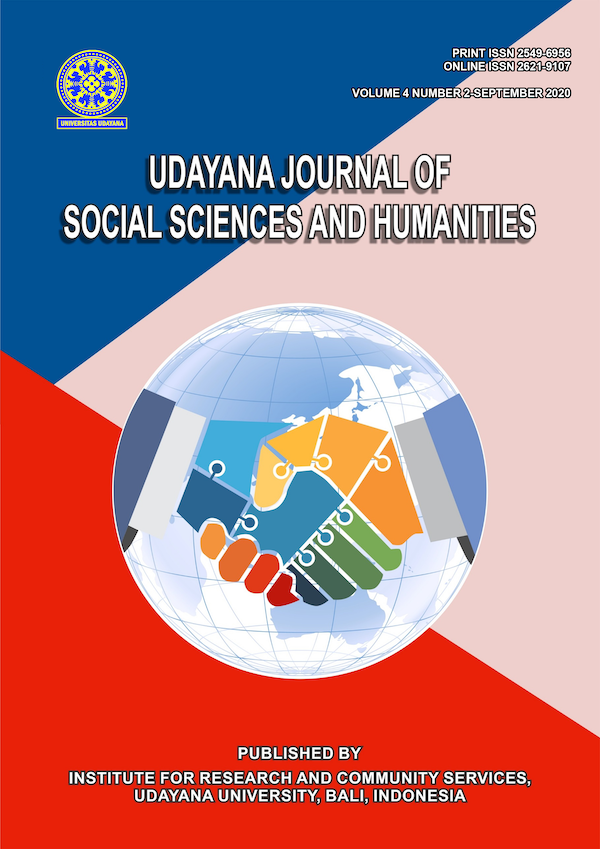The Application Of Autoregressive Integrated Moving Average Generalized Autoregressive Conditional Heteroscedastic (Arima - Garch)
Abstract
Rice farming for Indonesia is vital. Rice farming is inseparable from the fact that rice farming is the livelihood of most of the population, while rice is the staple food of almost all Indonesians. The nature of rice that is easy to process and, following the public consumption culture, causes a very high dependence on rice. On the other hand, the price of rice is quite volatile. If the price of rice is soaring high, it can cause changes in the pattern of rice consumption. Some people want a stable supply and rice price, available at all times and evenly distributed and at affordable prices. Because the cost of rice is quite fluctuating, it is necessary to have a model that can be used to predict future rice prices so that the right policies can be implemented. Autoregressive Integrated Moving Average Model Generalized Autoregressive Conditional Heteroscedastic (ARIMA-GARCH) is a useful model for evaluating and predicting price fluctuations. This model's application is implemented in the national average retail rice price data between January 2007 and December 2017. In this study, rice data in the study period was not stationary at the level so that differentiating was carried out in the data. The best model is ARIMA (1,1,2) and Garch model (2,0). In this model, the data has complied with the white noise assumption, and the resulting GARCH model is free from the heteroscedasticity assumption.
Downloads
References
[2] Bollerslev. 1986. Generalized Autoregressive Conditional Heteroskedasticity. Journal of Econometrics, 31:307-327.
[3] Dianti, R.W. 2010. Kajian Karakteristik Fisikokimia dan Sensori Beras Organik Mentik Susu dan IR64, Pecah Kulit dan Giling Selama Penyimpanan.[Skripsi]. Universitas Sebelas Maret. Surakarta. Hal 5.
[4] Eliyawati, W. Y., R. R. Hidayat, & D. F. Azizah. 2014. Penerapan Model GARCH (Generalized Autoregressive Conditional Heteroscedasticity) Untuk Menguji Pasar Modal Efisien Di Indonesia. Jurnal Administrasi Bisnis (JAB), Vol. 7 No. 2.
[5] Engle, RF. 1982. Autoregressive Conditional Heteroscedasticity with Estimates of the Variance of United Kingdom Inflation. Journal of Econometrica, Vol. 4 No. 4:987-1007.
[6] Engle, RF. 2001. GARCH 101: The Use of ARCH/GARCH Models in Applied Econometrics. Journal of Econometrics Perspectives, 4:157-168.
[7] Lastry, Yenny. 2006. Analisis Pola Konsumsi Beras Rumah Tangga Di Kota Bogor. Skripsi Sarjana Sosial Ekonomi Pertanian, Fakultas Pertanian. Institut Pertanian Bogor.
[8] Nastiti, K. L. A. & A. Suharsono. 2012. Analisis Volatilitas Saham Perusahaan Go Public dengan Metode ARCH-GARCH. Jurnal Sains dan Seni ITS, Vol. 1 No. 1.
[9] Prawiro, Radius. 1998. Pergulatan Indonesia membangun ekonomi : pragmatisme dalam aksi. Jakarta: Elex Media Komputindo.
[10] Santoso, T. 2011. Aplikasi Model GARCH pada Data Inflasi Bahan Makanan Indonesia. Jurnal Aset, Vol. 13 No. 1: 65-76.
[11] Tsay, R.S. 2005. Analysis of Financial Time Series. New York: A John Wiley & Sonc, Inc. Publication, (Online)
[12] Wei, W. 2006. Time Series Analysis: Univariate and Multivariate Methods. NeJersey: Pearson Education, Inc.






